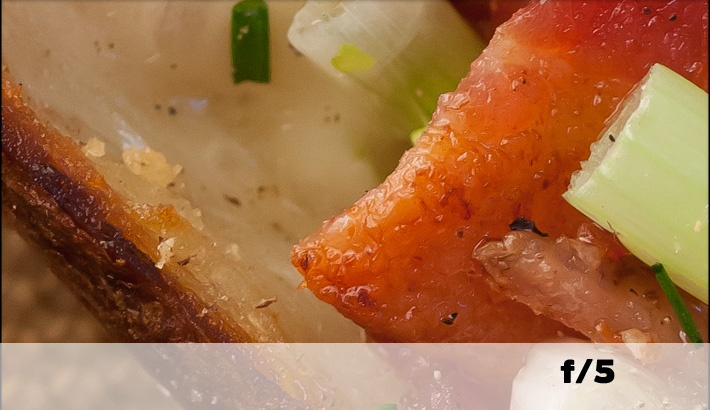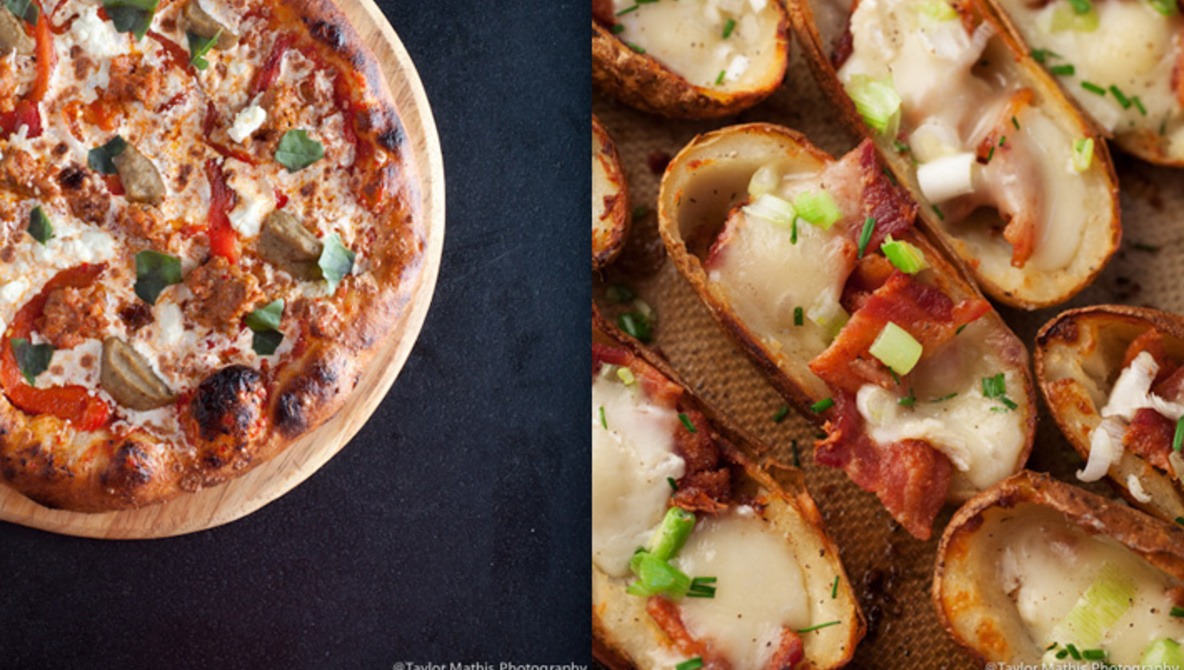How do you choose the right aperture for an image? If you are shooting at night with only available light, you may prefer a faster, wide open aperture to let more ambient light through your lens. If you are shooting a landscape, a smaller, stopped down aperture will give you a deeper depth of field and ensure your whole landscape is in focus. On the contrary, if you are doing a creative portrait session, a shallow depth of field can create an interesting and captivating portrait. If you are new to food photography, you may find yourself wondering, "What is the best aperture to shoot with?"
The best aperture to shoot with is the one that will have a depth of field deep enough for your subject to be in focus. This may seem kind of obvious, but let me explain. With food photography, every dish will have a different height and different layers of heights throughout it. Here is an example of two shots taken from an overhead shooting angle. The pizza was shot at f/14 and the potato skins were shot at f/5.



If your dish is going to look better from a head on or eye level camera position, what aperture should you use? That will depend on how much of the background you want in focus. If your background is potentially distracting then a wide open aperture with a shallow depth of field will help draw your attention to your subject. Here is a look at a cupcake shot at f/2.8 and f/13.

Which do you prefer? Or is it maybe a shot with a depth of field in between? At f/13, you may find the background too distracting to give your full attention to the cupcake. If you are shooting with a super fast prime lens, it may be tempting to shoot all your dishes at f/1.2 or f/1.4 but keep in mind that this shallow depth of field may leave part of your subject out of focus. Here is a 100% view of the f/2.8 cupcake.


In choosing what aperture is best for your image, keep in mind your subject's shape and what camera angle you will be shooting at. There is nothing wrong with purposefully having part of your subject out of focus, but if you are wanting all of your subject to be in focus throughout, make sure that the aperture you select will have a deep enough depth of field.
Want to learn more about food photography? Check out Issues 1-6 of photographing FOOD.







Great info, Taylor
Fantastic! Some really great simple tips on how to create the exact effect you are looking to acheive. I am looking to do some food styled shots for my company in the near future and these food posts have been perfect to reference back to before a shoot and get some ideas for different types of shots. Great post!! Thanks!
I got hungry reading this great article!
Taylor,
With how elementary the subject of DOF is, I would think you would mention the impact the aperture has on available light for the subject. I can see it now, people dropping their shutter speed to compensate getting the shake blurs. Without sunlight and a diffuser or external light source/strobe/flash the beautiful shots in this article will be hard to come by.
This is just a roundabout way of complimenting your great shots Taylor, good stuff.
These examples helps us grasp the basics of Lens Aperture. Thanks!
Thanks for the tips